How to Blanch and Freeze Spinach
Here’s all you need to know to blanch and freeze spinach to enjoy all year long.
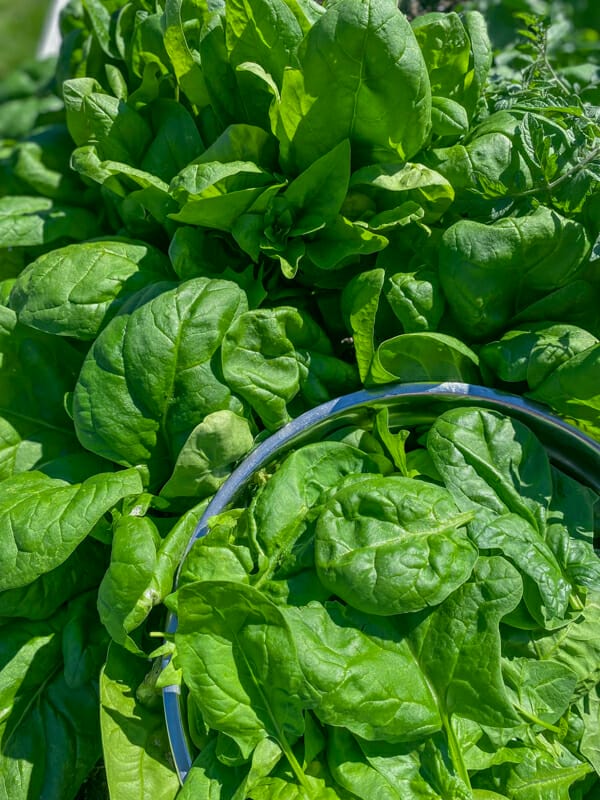
Also Read: Quick Guide to Blanching and Freezing Veggies, What’s So Good About Spinach, How to Select, Store & Use Spinach
If you love adding spinach to smoothies, soups or sauces, you’ll enjoy having these handy frozen spinach pucks.
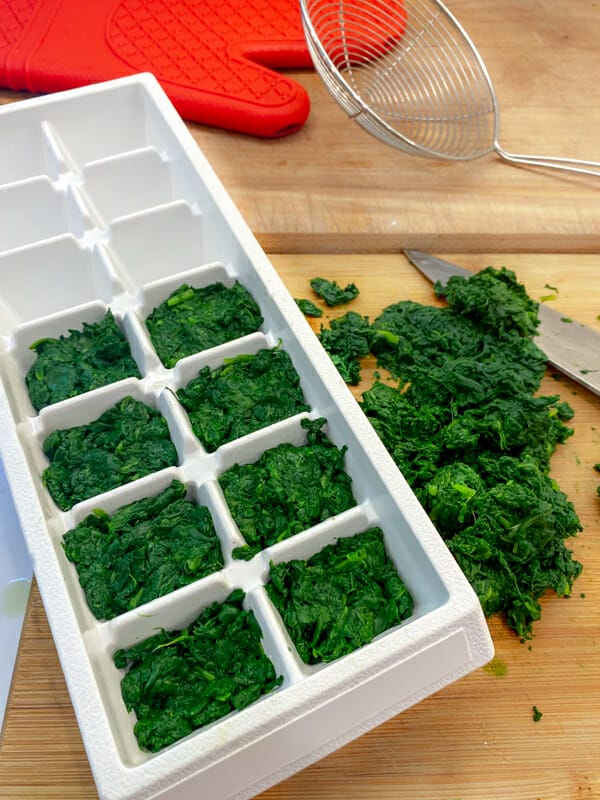
Why Blanch Spinach?
You will find websites that say you don’t have to blanch spinach. They say all you have to do is pop spinach in a bag and freeze. Be cautious when following that advice. It will work if you plan to use your frozen spinach fairly quickly, but if it stays in your freezer for more than 9-12 weeks you risk loss of flavor, color, texture and overall quality.
Blanching preserves flavor, texture and color. It is worth the little bit of time and effort it takes. Read my handy guide on Blanching & Freezing Veggies.
Vegetables that have not been properly blanched will continue to age in the freezer. The naturally occurring aging enzymes in fresh produce continue to function at freezing temps. What stops the enzymes from aging your veggies is blanching – which is a fancy word for boiling your veggies for a short period of time.
To prevent flavor loss and to lock in nutrients and help preserve color blanch spinach and other veggies before freezing. The National Center for Home Food Preservation recommends blanching (boiling) spinach for 2 minutes.
How to Freeze Spinach
The following process for how to freeze spinach can be used for swiss chard, kale, stinging nettle or beet tops too.
How to Blanch and Freeze Spinach
Ingredients
- 1 lb Spinach
- Water
- Ice
Instructions
- Gather fresh spinach.
- Bring a large pot of water to boil.
- Meanwhile, wash spinach at least two to three times to ensure all fine silt is removed.
- Remove any large stems and yellowed or blemished leaves.
- Toss spinach into boiling water. To ensure even boiling, don't overcrowd the pot, repeat the process several times in small batches.
- When water returns to full boil, set timer and boil for 2 minutes.
- Meanwhile, fill a large bowl with freezing cold water and ice.
- After 2 minutes of boiling the spinach, immediately turn off heat and transfer spinach from boiling water to ice cold water.
- Let spinach cool in ice water bath for 2 minutes.
- Remove from water and squeeze out as much water as possible using the back of a spoon and wire mesh or your hands.
- If desired, chop spinach to desired size.
- Place spinach in ice cube tray or into freezer bag.
- Place ice cube tray in freezer for one to two hours then transfer frozen cubes to freezer bag.
- Remove as much air from bag as possible before sealing. Use a straw inserted into a small opening and suck out air to create a simple vacuum seal. This helps prevent freezer burn.
- Label and freeze for one year.
Video
Notes
1 pound (16 oz) of fresh spinach = 10-12 cups leaves = 1 1/2 cups cooked
10 oz frozen spinach = 1 1/2 cups cooked spinach
Nutrition Facts (per serving)
Blanching & Freezing Spinach – The Video
More Tips
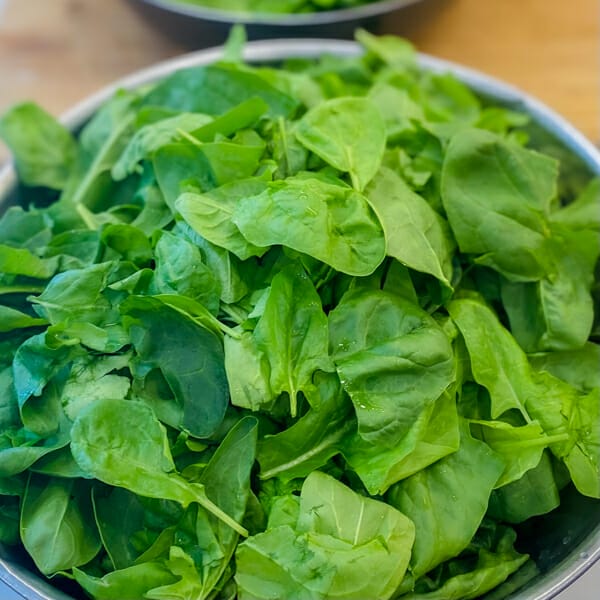
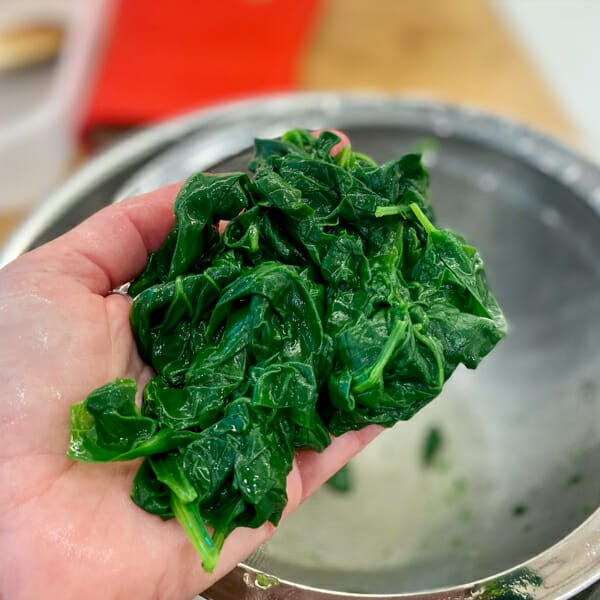
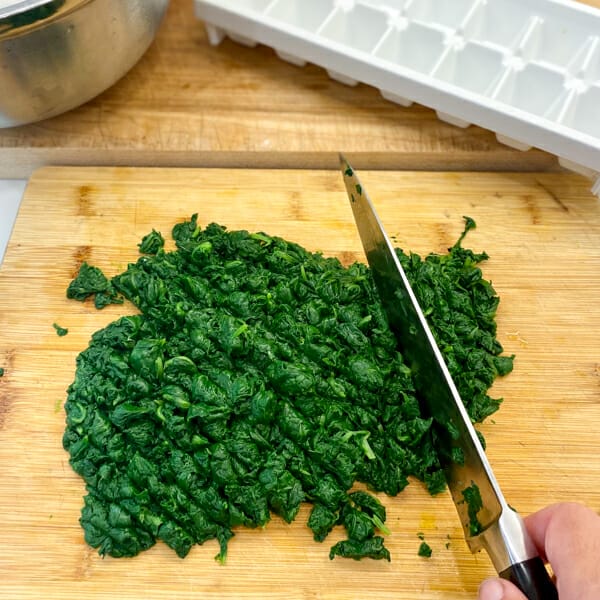
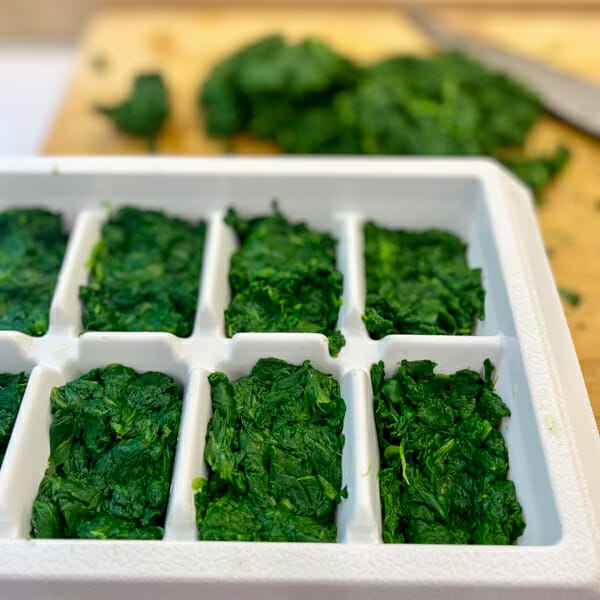
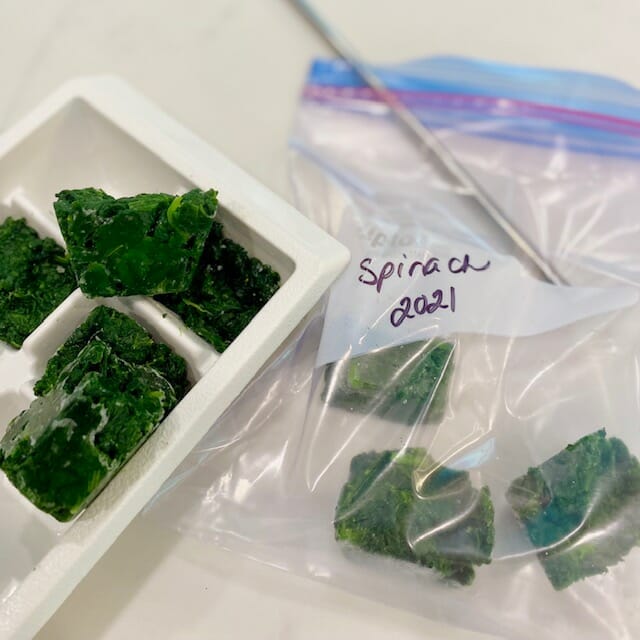
Enjoy your frozen spinach! It’s best used within one year.
What’s your favourite way to use frozen spinach? I’d love to hear from you. Leave a comment below or tag me on Instagram at #getgettys or Facebook @GettyStewart.HomeEconomist.
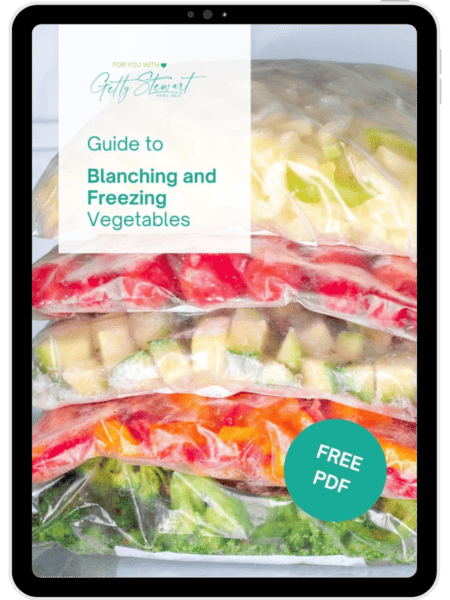
FREE Guide to Blanching & Freezing Vegetables
Blanching is easy! Use this guide as a quick reference when preserving.
This 3 page reference guide includes all the info you need to get blanching:
- A detailed, step by step how-to process
- Blanching times for different vegetables
- Tips to avoid freezer burn
- Details for how to freeze fruits.
Click the link below, share your email and it’ll land in your inbox right away. Great for hanging in your cupboard or tucking into your favourite recipe book for quick, easy reference.
Select, store and serve seasonal food for everyday cooking with Getty. Getty is a food educator and Professional Home Economist, who loves sharing tips and recipes following the seasons from her Canadian kitchen. Sign up to get seasonal tips and recipes delivered to your inbox. Learn more about Getty or check out her books and pdf guides.


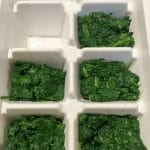
Doesn’t boiling the spinach mean that a lot of the nutrients are lost?
Great question. The common belief is that cooking veggies will destroy nutrients but it’s not as simple as that. Yes, you will lose some (not all) of the water soluble vitamins when you cook and/or boil spinach (e.g. Vitamin C). BUT, cooking actually makes some vitamins and nutrients more easy to absorb. For example in spinach calcium and iron are more easily absorbed after cooking. Also vitamins A and E and important carotenoids, such as beta-carotene, lutein, and zeaxanthin also become more absorbable.
You certainly don’t want to overcook spinach, that’s why it’s important to follow the short blanching time recommended in the article above.
Your best option, as with all veggies, is to eat a variety of veggies in all their forms – cooked and raw.